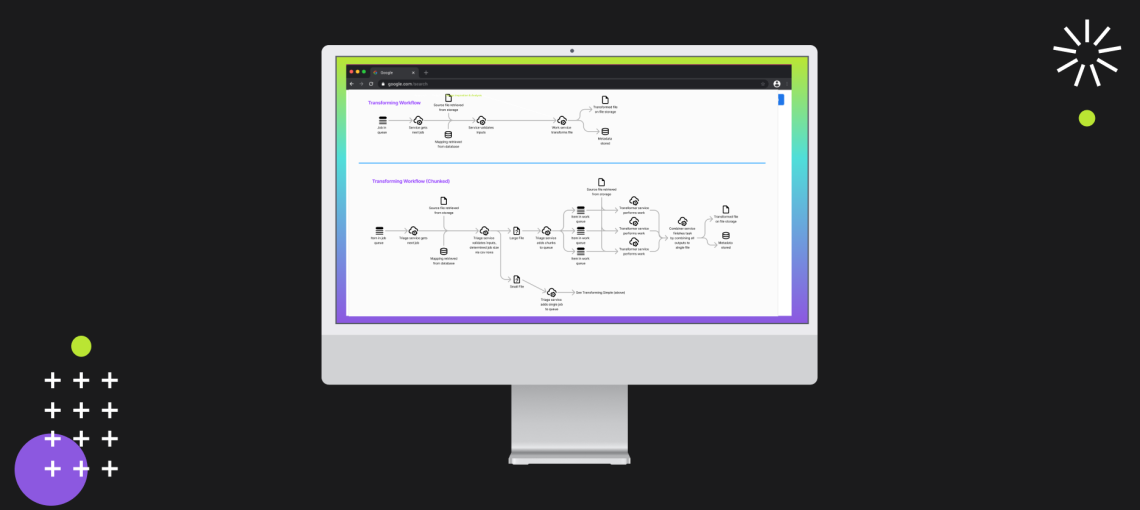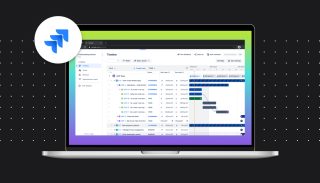In today’s fast-paced digital world, software applications are the backbone of businesses, services, and daily life. From e-commerce platforms to intricate enterprise systems, every application relies heavily on one fundamental component: a well-structured and robust database. Database development, therefore, isn’t just an auxiliary task; it’s a crucial discipline that forms the foundation of modern software solutions’ performance, scalability, security, and ultimate success. And with the rise of Artificial Intelligence (AI), the strategic importance of expert database development, particularly in supporting and enabling AI innovation, is only accelerating. This symbiotic relationship defines the landscape of AI & Database Development.
Why Robust Database Development Matters for AI & Modern Software
A database is more than just a collection of data; it’s an organized repository that allows applications to store, retrieve, and manage information efficiently. Without a robust database, even the most elegantly designed user interface or cutting-edge algorithms would falter. Moreover, as AI applications become more prevalent, the quality, accessibility, and structure of the underlying data in databases become even more important. Here’s why robust database development is so crucial, particularly when considering AI and database development:
- Performance and Speed: A poorly designed database can lead to slow query times, application bottlenecks, and a frustrating user experience. Robust development involves optimizing data models, indexing strategies, and query structures to ensure rapid data access and manipulation, which directly translates to a snappy and responsive application. This speed is especially critical when feeding real-time data to AI models, where delays can significantly impact model accuracy and responsiveness.
- Scalability: As businesses grow, so does their data. A well-developed database is designed with scalability in mind, allowing it to handle increasing volumes of data and user traffic without compromising performance. This might involve choosing the right database technology (SQL vs. NoSQL), implementing sharding, or designing for horizontal scaling – all crucial for the massive datasets often consumed by AI. The demands of AI and database development necessitate highly scalable data infrastructures.
- Data Integrity and Consistency: Ensuring that data is accurate, consistent, and reliable is paramount. Robust database development implements constraints, validation rules, and transactional integrity (ACID properties for relational databases) to prevent data corruption and maintain the highest level of data quality. For AI models, “garbage in, garbage out” is a stark reality, making clean, consistent data from a well-managed database non-negotiable. This is a foundational aspect of successful integration of AI and database development.
- Security: Databases are prime targets for cyberattacks due to the sensitive information they often hold. Secure database development involves implementing strong authentication and authorization mechanisms, data encryption (at rest and in transit), regular security audits, and adherence to compliance standards. Protecting your data is protecting your business, and increasingly, AI is assisting in this defense within the realm of database security.
- Reliability and Availability: Applications need constant access to their data. Robust database solutions incorporate backup and recovery strategies, disaster recovery plans, and high-availability setups to ensure that data is always accessible, even in the face of hardware failures or unexpected outages. This continuous availability is vital for AI systems that rely on uninterrupted data streams. Reliable database development directly supports the continuous operation of AI applications.
- Maintainability and Flexibility: A well-documented and logically structured database is easier to maintain, troubleshoot, and adapt to future requirements. Good development practices lead to schemas that are intuitive and flexible enough to accommodate new features and evolving business logic without requiring costly overhauls. This flexibility also supports the evolving data needs of AI and machine learning models, which frequently require schema adjustments for new data types or features. Flexibility is key for long-term AI and database development success.
- Data Governance and Responsible AI: Beyond just security, robust database development establishes critical data governance frameworks. These frameworks define who can access what data, for what purpose, and for how long. This is paramount when integrating AI, as it ensures AI models only process data they are authorized to, preventing misuse, maintaining privacy, and adhering to ethical AI principles. This proactive approach to data management limits the scope of AI’s access to sensitive or irrelevant data, focusing its power on what truly matters.
Key Considerations in Database Development for AI
Developing a robust database involves several key considerations:
- Database Selection: Choosing the right database management system (DBMS) – whether it’s a relational database like PostgreSQL or MySQL, or a NoSQL database like MongoDB, DynamoDB, or Cassandra – depends on the specific needs of the application, data structure, scalability requirements, and performance expectations. The emergence of specialized databases like vector databases for AI applications further expands these choices, highlighting the evolving landscape of AI and database development.
- Data Modeling: This is the blueprint of your database. A meticulously designed data model ensures data integrity, minimizes redundancy, and optimizes data retrieval. It involves defining tables, relationships, attributes, and constraints. For AI, semantic data modeling that captures meaning and context can greatly enhance an AI model’s understanding and performance.
- Indexing: Proper indexing is vital for query performance. Strategic indexing can drastically reduce the time it takes to retrieve data, but over-indexing can introduce its own overhead. Optimizing indexing strategies is increasingly being aided by AI-powered tools within database systems.
- Query Optimization: Writing efficient queries is crucial. This involves understanding execution plans, avoiding common pitfalls, and continuously monitoring and optimizing frequently run queries. AI is starting to play a significant role in automating and suggesting query optimizations.
- Backup and Recovery Strategies: Establishing automated backup routines and testing recovery procedures are non-negotiable to prevent data loss. Reliable backup and recovery ensure that the data critical for AI training and operation is always available.
Security Best Practices: Implementing role-based access control, encryption, and regular vulnerability assessments are essential for protecting sensitive information. These practices are continuously being enhanced by AI in database security.
Enhancing Management and Powering Innovation by AI
Artificial intelligence is not just a consumer of data; it’s rapidly becoming a powerful assistant and optimizer within database development and management itself. This symbiotic relationship is ushering in a new era of “smarter” databases, fundamentally reshaping the field of AI & Database Development:
- Automated Optimization and Performance Tuning: AI algorithms can analyze vast amounts of data on query patterns, resource usage, and performance metrics. This allows them to automatically tune database parameters, suggest optimal indexing strategies, and even rewrite inefficient queries on the fly, all while adhering to pre-defined access controls and data classifications. This automation frees up database administrators (DBAs) from routine, time-consuming tasks, allowing them to focus on more strategic initiatives. Predictive analytics powered by AI can even foresee potential performance bottlenecks before they occur, enabling proactive prevention.
- Enhanced Data Quality and Governance: AI is transforming data quality management by continuously monitoring data for errors, inconsistencies, and anomalies. Machine learning models can learn from historical corrections, identify patterns of data degradation, and even suggest automatic fixes or flag issues for human review. This ensures the data powering your applications and AI models remains accurate and trustworthy. AI also assists in data governance by automating metadata management and aiding in compliance checks, and enforcing policies that dictate how AI models interact with and process sensitive information, ensuring adherence to privacy regulations.
- Intelligent Security and Anomaly Detection: The sophistication of cyber threats demands equally sophisticated defenses. AI-powered security solutions in databases can analyze access patterns and user behavior in real-time. By establishing baselines of normal activity, AI can swiftly detect unusual logins, suspicious data access, or potential insider threats, enabling faster response times than traditional rule-based systems. AI can also automate sensitive data masking and encryption, further bolstering security by limiting direct exposure of raw data to AI processes, especially in analytical or diagnostic functions. This represents a significant leap forward in AI and database development security.
- Democratizing Data Access with Natural Language Processing (NLP): Imagine querying your database in plain English, without needing to know complex SQL syntax. NLP-driven interfaces, often powered by large language models (LLMs) integrated with databases, are making this a reality. This allows non-technical users across an organization to access and derive insights from data within their authorized scope, greatly increasing data accessibility and fostering a data-driven culture. It’s crucial that these NLP interfaces respect existing data access policies and security protocols. This innovation directly impacts AI & Database Development’s user accessibility.
- The Rise of Autonomous Databases: Leading database providers are increasingly offering “self-driving” or autonomous databases. These systems leverage AI and machine learning to fully automate routine management tasks such as provisioning, patching, security updates, backups, and performance tuning. This dramatically reduces the operational burden and human error, allowing businesses to focus on application development and innovation. Autonomous databases are a prime example of the future of AI & Database Development.
- Databases as the Foundation for AI: While AI assists databases, it’s equally important to remember that databases are the foundational bedrock for all AI and machine learning initiatives. AI models require massive volumes of high-quality, structured, and accessible data for training and inference. Robust database development ensures that this crucial data is not only stored efficiently but is also ready to be consumed by sophisticated AI algorithms, enabling everything from predictive analytics to generative AI applications. The synergy between AI and database development is undeniable.
Conclusion: The Indispensable Partnership of AI & Database Development
In the landscape of modern software development, the database is far more than just a storage facility; it is the intelligent core that powers an application’s functionality, performance, and reliability. With the transformative influence of Artificial Intelligence, database development is evolving from a foundational discipline to a dynamic, AI-augmented powerhouse. Investing in robust database development, now increasingly intertwined with AI capabilities, is not an expense but a strategic imperative that ensures data integrity, enhances user experience, fortifies security, and provides a scalable, future-proof foundation for long-term success in the digital age. This includes diligently implementing data governance strategies that define clear boundaries for AI interaction with data, safeguarding privacy, and ensuring responsible AI deployment. For any business aiming to build resilient and high-performing software solutions, prioritizing expert AI & Database Development is a decision that pays exponential dividends.









